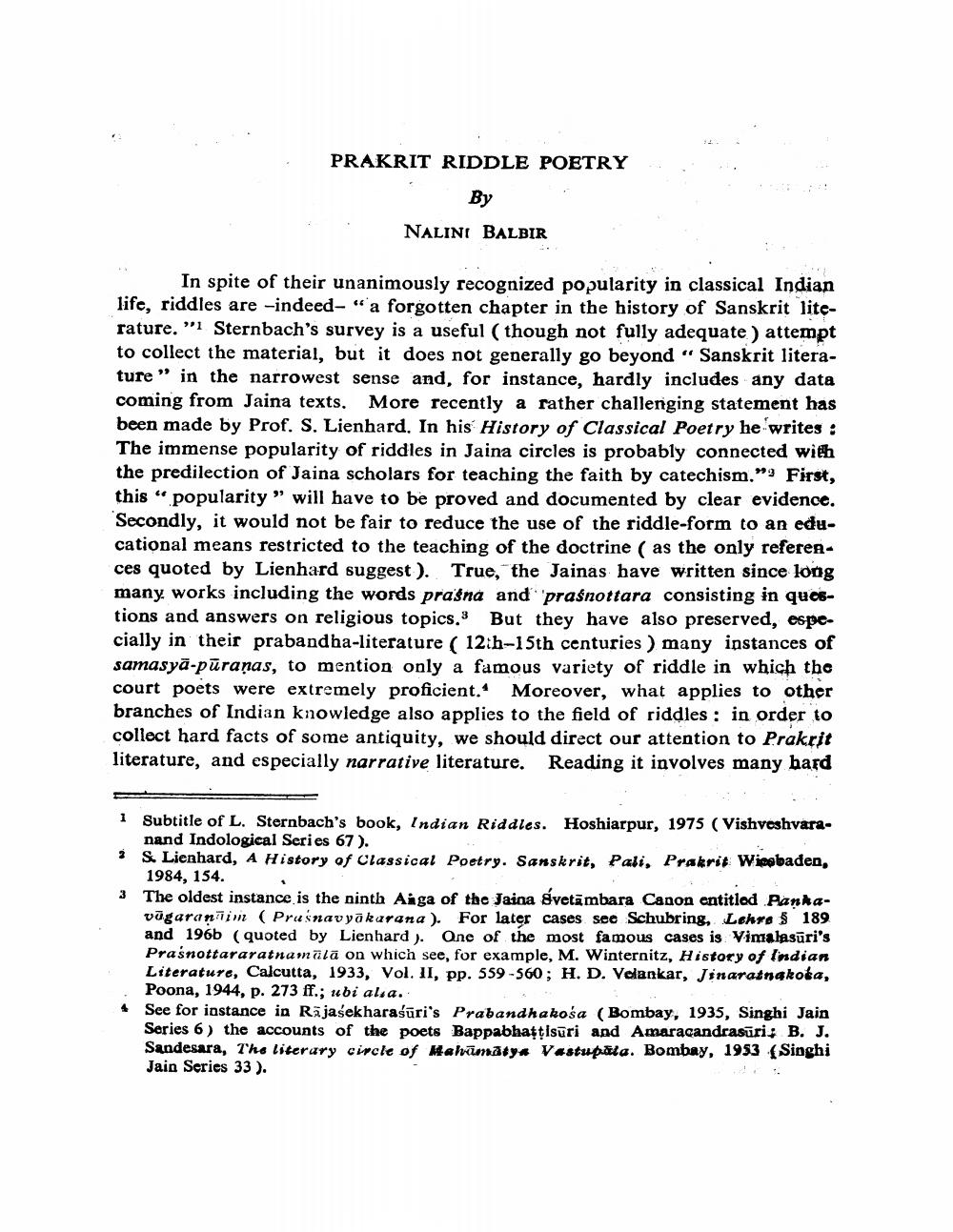Book Title: Prakrit Riddle Poetry Author(s): Nalini Balbir Publisher: Nalini Balbir View full book textPage 1
________________ PRAKRIT RIDDLE POETRY By NALINI BALBIR In spite of their unanimously recognized popularity in classical Indian life, riddles are indeed- "a forgotten chapter in the history of Sanskrit literature." Sternbach's survey is a useful (though not fully adequate) attempt to collect the material, but it does not generally go beyond "Sanskrit literature" in the narrowest sense and, for instance, hardly includes any data coming from Jaina texts. More recently a rather challenging statement has been made by Prof. S. Lienhard. In his History of Classical Poetry he writes: The immense popularity of riddles in Jaina circles is probably connected with the predilection of Jaina scholars for teaching the faith by catechism." First, this "popularity" will have to be proved and documented by clear evidence. Secondly, it would not be fair to reduce the use of the riddle-form to an educational means restricted to the teaching of the doctrine (as the only references quoted by Lienhard suggest). True, the Jainas have written since long many works including the words prašna and prasnottara consisting in questions and answers on religious topics. But they have also preserved, especially in their prabandha-literature ( 12:h-15th centuries) many instances of samasya-puranas, to mention only a famous variety of riddle in which the court poets were extremely proficient. Moreover, what applies to other branches of Indian knowledge also applies to the field of riddles: in order to collect hard facts of some antiquity, we should direct our attention to Prakrit literature, and especially narrative literature. Reading it involves many hard 1 Subtitle of L. Sternbach's book, Indian Riddles. Hoshiarpur, 1975 (Vishveshvaranand Indological Series 67). * S. Lienhard, A History of Classical Poetry. Sanskrit, Pali, Prakrit Wiesbaden, 1984, 154. 3 The oldest instance is the ninth Anga of the Jaina Svetambara Canon entitled Pankavūgarantim (Prasnavyakarana). For later cases see Schubring, Lehre § 189 and 196b (quoted by Lienhard). One of the most famous cases is Vimalasūri's Prasnottararatnamala on which see, for example, M. Winternitz, History of Indian Literature, Calcutta, 1933, Vol. II, pp. 559-560; H. D. Velankar, Jinaratnakoka, Poona, 1944, p. 273 ff.; ubi alia. See for instance in Rajasekharaśuri's Prabandhakosa (Bombay, 1935, Singhi Jain Series 6) the accounts of the poets Bappabhaṭṭisuri and Amaracandrasuri; B. J. Sandesara, The literary circle of Mahamatya Vastupala. Bombay, 1953 (Singhi Jain Series 33).Page Navigation
1 2 3 4 5 6 7 8 9 10 11 12 13
